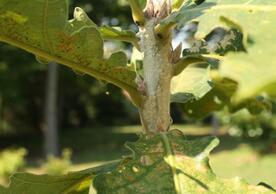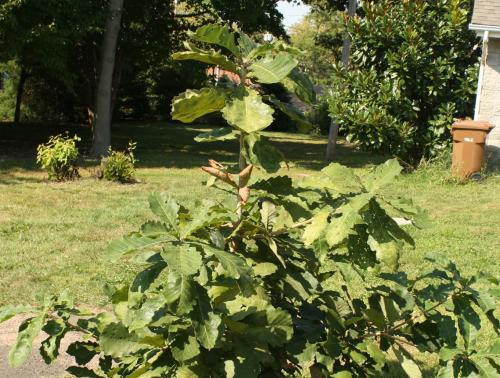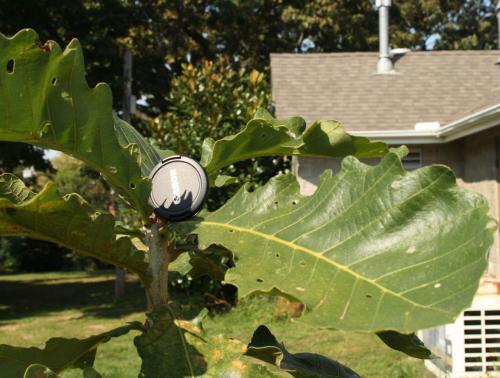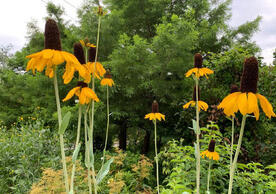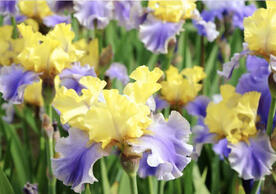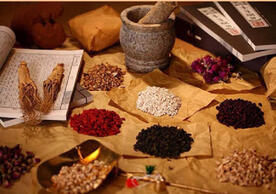Liquid Sunshine - Quercus dentata
I made a mistake last week in announcing our open house in late October. That weekend is fall break for Yale, so I have rescheduled this event for Friday November 9, same time 5:00 to 7:30. Peach Pie Band will join the Usual Suspects as the method of entertainment.
Also for your calendar, one of our volunteers and I will be providing a Tree Walk on Saturday October 20, We will be talking about a select group of trees here at the garden which we suspect/hope will be showing fall color. We will be talking about autumn coloration, how it happens, what trees to look for and plant and any other topics that attendees find interesting.
One of the best parts of my job working here at Yale’s Marsh Botanical Garden is that I get to think fifty years down the road. “Oh sure, that’s easy,” you say. Global warming will have warm seas lapping at the hills of Cheshire and depending on which corporations get elected over the next few cycles, we might or might not have more or less environmental problems. All that is true, but what I am talking about is planting white oaks.
The white oak group, as a whole, is a persnickety one as regards transplanting. They develop tap roots at a very young age, and so tend not to be good candidates for nurseries and homeowners to contemplate as transplanted specimens. I have seen a few swamp white oaks available as fifteen to twenty foot specimens in one or two specialty nurseries, but generally you have to plant a very small white oak tree to avoid significant transplant shock and mortality.
Of course the easiest thing to do is to plant an acorn, which isn’t all that successful in our neck of the woods: I have had squirrels dig first year oak saplings to get at the nut. Or you can look for a source for two- or three-year old saplings, and there are many.
The other problem is that generally white oak group members are very slow growing. So planting a three-year old sapling is an exercise in humility and patience. Humility in knowing that our fleeting time on earth represents unbridled youth for a white oak, patience in waiting for it to begin to put on its teenage bulk.
When I say white oak group members, I mean as opposed to the other predominant group, which I refer to as the red oak group. There are others: the cerros oak group and what is referred to as the ‘intermediate’ group, but for us in the northern U.S., it’s basically white and red, like wines if you will. The white oaks include Q. alba, of course, but also swamp white oak (Q, bicolor), the post oak (Q. stellata), the burr oak (Q. macrocarpa), the swamp chestnut oak (Q, michauxii), the chinkapin oak (Q. muehlenbergii), the chestnut oak (Q. prinus) and many many others, from almost all continents. White oaks have leaves with rounded lobes, as opposed to the pointed lobes of the red oaks. The acorns are either sweet or only slightly bitter, while the red oaks and others have a very bitter flavor.
Our plant this week is a somewhat rare member of the white oak group. I planted it five years ago, and in its second year it had an unfortunate meeting with a large mower which resulted in it being pollarded completely to the ground, much to my chagrin. I was actually in the area and watched the event, totally dumbstruck until afterwards (as usual, thinking retroactively). So I gave a quick ‘tutorial’ to the fellow riding the lawn mower and then staked the stump (which started growing back almost immediately) more forcefully, with orange and yellow banners aflutter as if it were a Tibetan prayer flag.
The Daimyo Oak is a native of Japan, Korea and China. It is a fairly large tree in its native range, gowing to over 80 feet tall, but under cultivation we can expect a smaller specimen, perhaps to sixty feet. The leaves are the largest of any of the oaks, reaching up to fifteen inches in length. They are downy on both sides, but gradually losing the short soft hair on the top of the leaf.
One aspect that I really like about the daimyo oak is that the stems are also hairy, which adds a very nice winter interest to this rather irregularly shaped tree. It eventually reaches a stage where its general aspect is a globe, but in the meantime one must put up with a bit of teenage ‘charm,’ or some awkward looking profiles.
Plant daimyo oak in full sun and well-drained average soil. It will do well once the lawn mowers leave it alone, and it will reward you with years of carefree conversation initiation. It really is out of the ordinary, even to the unpracticed and unhorticultural eye.
Your friend,
Eric
